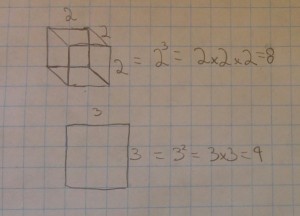Monthly Archives: November 2016
Lesson 4 Hand In Weight Maintenance
Lesson 3 Hand-in Cardiovascular Health
Mitosis work sheets
Lesson 2 Hand In Heart Rate Monitor
Asexual Reproduction Lesson 1
Lesson 1 active health Hand-In
lesson-1-hand-in-rate-yourself This is my assignment for lesson 1 of active health for PE 9
How things work science project
block-c-science-george-dylan-electricity-project-questions
For this project me and Dylan made an electric eel out of clay, we opened it and made the organs out of clay to. I think our project was successful. We worked very well together and we did the work together. We could’ve made the project show a bit more about how the electric eel works. At the end, me and Dylan were proud of this project
Everything I know about exponents
This is my assignment for exponents
- Represent repeated multiplication with exponents.
This is the basics of exponents, an exponent is a number (base) multiplied by its own using a power (number of times multiplied)
Ex:
2. Describe how powers represent repeated multiplication
Lets say , 5 would be the base and 6 would be the power, it would look like this; 5x5x5x5x5x5
3. demonstrate the difference between the exponent and the base by building models of a given power, such as and
4. Demonstrate the difference between two given powers in which the exponent and the base are interchanged by using repeated multiplication, such as and
would be 2x2x2=8
would be 3×3=9
5. Evaluate powers with integral bases (excluding base 0) and whole number exponents.
Lets say or
or
6. Explain the role of parentheses in powers by evaluating a given set of powers such as
and
is the same thing,
But when the base is in parentheses like it would be
7. Explain the exponent laws for multiplying and dividing powers with the same base
as you can see, we have the same base, we would not multiply the base and add the exponents together.
It would look like this
as you can see, we have the same base, we would not divide the base and we would subtract the exponents.
It would look like this
8. Explain the exponents laws for raising a product and quotient to an exponent
we can see here the base isn’t the same, that means we would divide the bases and keep the exponents.
It would look like this
9. Explain the law for power with an exponent of 0
Any positive base to the power of 0 would be 1
10. Use patterns to show that a power with an exponent of 0 is equal to 1
We can use the base of 5
As you can see, each step down, the number divides by 5
11. Explain the law for powers with negative exponents
We divide the power by the base.
12. Use patterns to explain the negative exponent law
Lets say this would be like
13. I can apply the exponent laws to powers with both integral and variable bases
Yes, lets say we would do
14. I can identify the error in a simplification of an expression involving powers
Yes, lets say , this would be wrong because it doesn’t correspond to the product rules, when you do multiply a power by the same base you add the exponents together and not subtract
15. Use the order of operations on expressions with powers
=
=
=
16. Determine the sum and difference of two powers
Sum
Difference:
17. Identify the error in applying the order of operations in an incorrect solution
Here I did not use the BEDMAS rule correctly
18. Use powers to solve problems (measurement problems)
There is a rainfall in Congo, the millimeters of rain quintuples every hour and it started out with 5 millimeteres. How many millimeters of rain will there be in 1 hour? 2 hours? 5 hours?
1 hour: =5mm
2 hours: =25mm
5hours: =3125mm
19. Use powers to solve problems (growth problems)
On this sheet of paper there is 4 bacteria, every hour it doubles. How many bacteria will there be in 1 hour? 2 hours? 5 hours?
1 hour: =4 bacteria
2 hours: =16 bacteria
5 hours: =1024 bacteria
20. Applying the order of operations on expressions with powers involving negative exponents and variable bases
=
=
=







